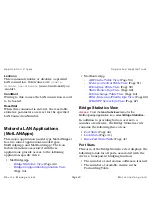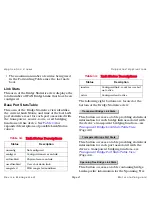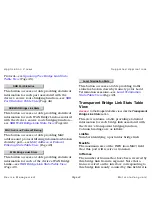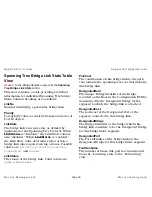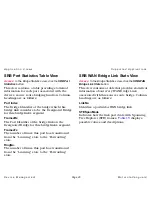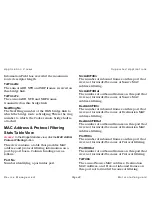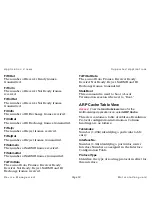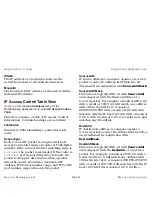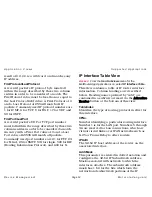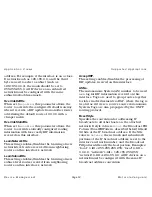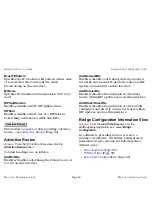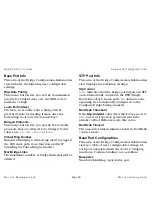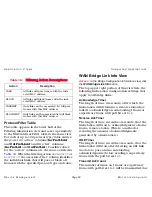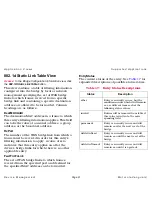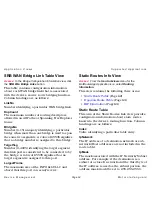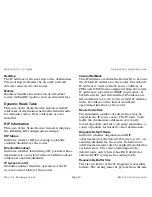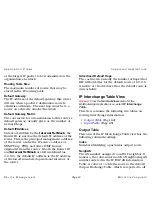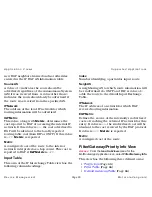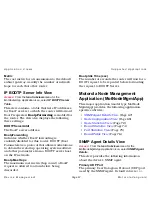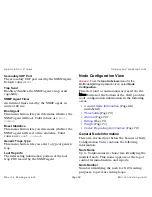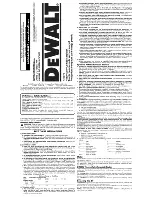
A p p l i c a t i o n V i e w s
S u p p o r t e d A p p l i c a t i o n s
D e v i c e M a n a g e m e n t
Page 53
M o t o r o l a V a n g u a r d
address. For example, if the interface is on a class
B network such as 128.185.0.0, and the third
byte is used to select a subnet (such as
128.185.100.0), the mask should be set to
255.255.255.0. All IP devices on a subnetted
network must be configured with the same
subnetwork address mask.
OverrideDefRte
When set to
enabled
, this parameter allows the
router to override the configured Default Gateway
when it receives a RIP update from another router
advertising the default route of 0.0.0.0 with a
cheaper metric.
OverrideStaticRte
When set to
enabled
, this parameter allows the
router to override statically configured routing
information with less costly RIP information
received on this interface.
LearnNetworkRte
This setting enables/disables the learning of new
network-level routes received from neighboring
routers on this interface’s network.
LearnSubnetRte
This setting enables/disables the learning of new
subnet-level routes received from neighboring
routers on this interface’s network.
AcceptRIP.
This setting enables/disables the processing of
RIP updates received on this interface.
ASNo.
The Autonomous System (AS) number to be used
as a tag for RIP information received on this
interface. Tags are used to group routes together
for later readvertisement via EGP, where the tag is
treated as if it were a route’s source Autonomous
System. Tags are also propagated by the OSPF
routing protocol.
BcastStyle
Specifies the convention for addressing IP
broadcasts to all other hosts on the attached
network. If style value is
local
, the Broadcast Fill
Pattern (BcastFillPattern, described below) fills all
32 bits of the IP broadcast address. If the Stle
value is
network
, the network and subnetwork
portions of the IP broadcast address is set to the
interface’s network number, and the Broadcast
Fill pattern fills only the host portion. Examples:
“local” 1-fill = 255.255.255.255; “local” 0-fill =
0.0.0.0; “network”1-fill = 128.185.255.255;
“network” 0-fill =128.185.0.0. All IP devices on a
network must be configured with the same IP
broadcast address convention.


